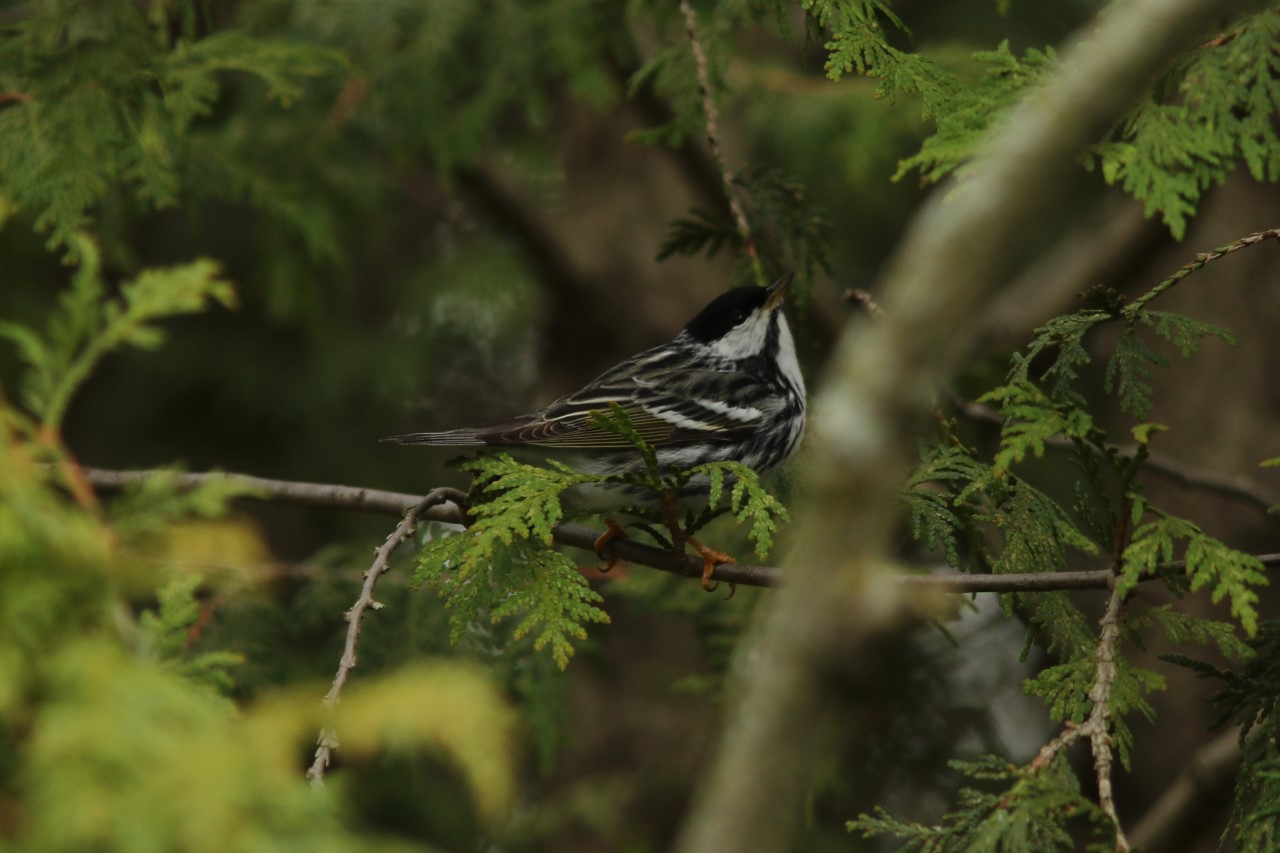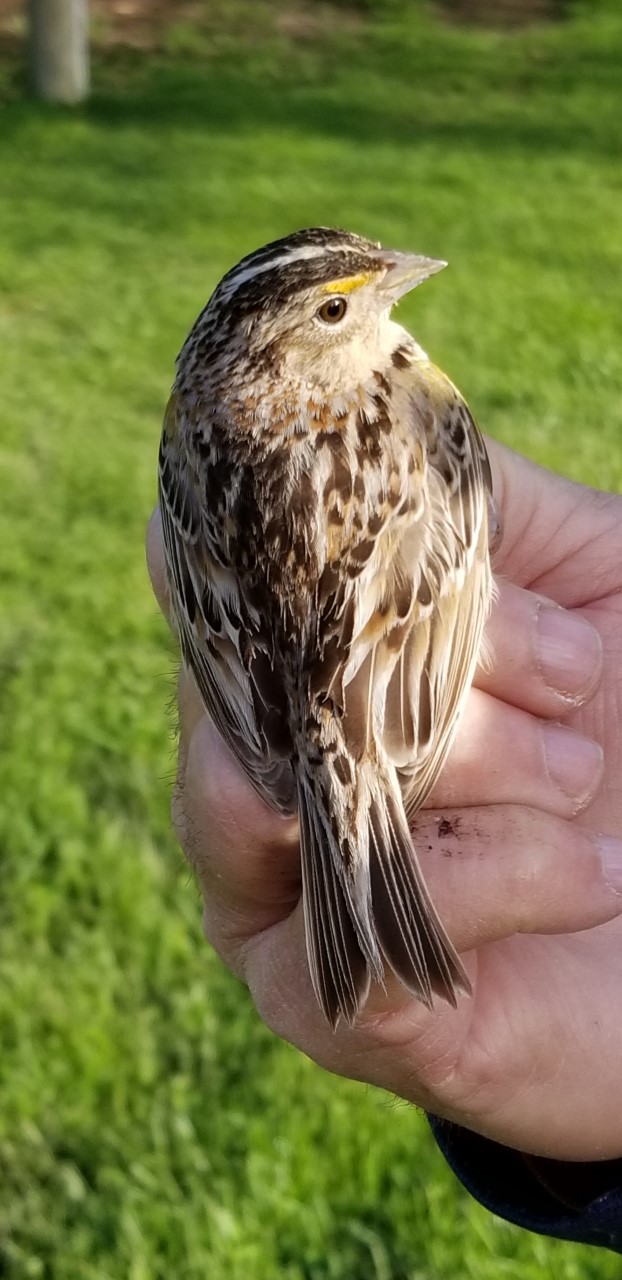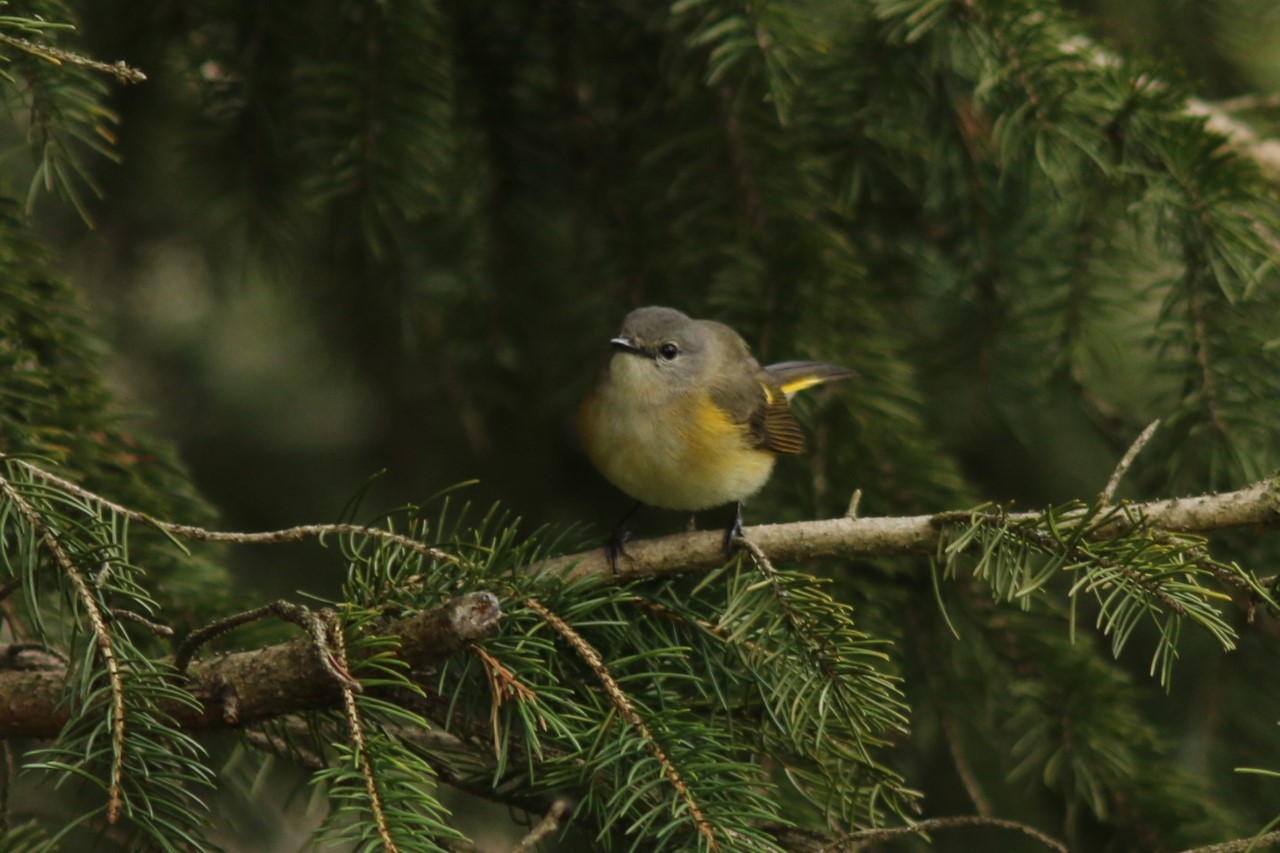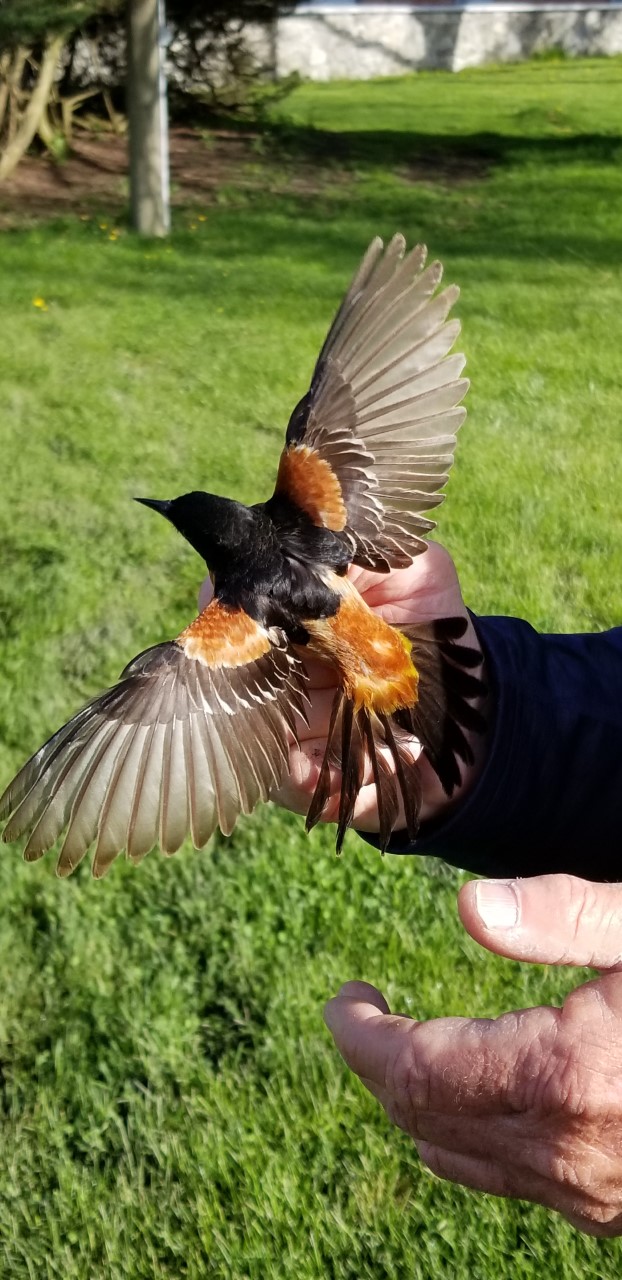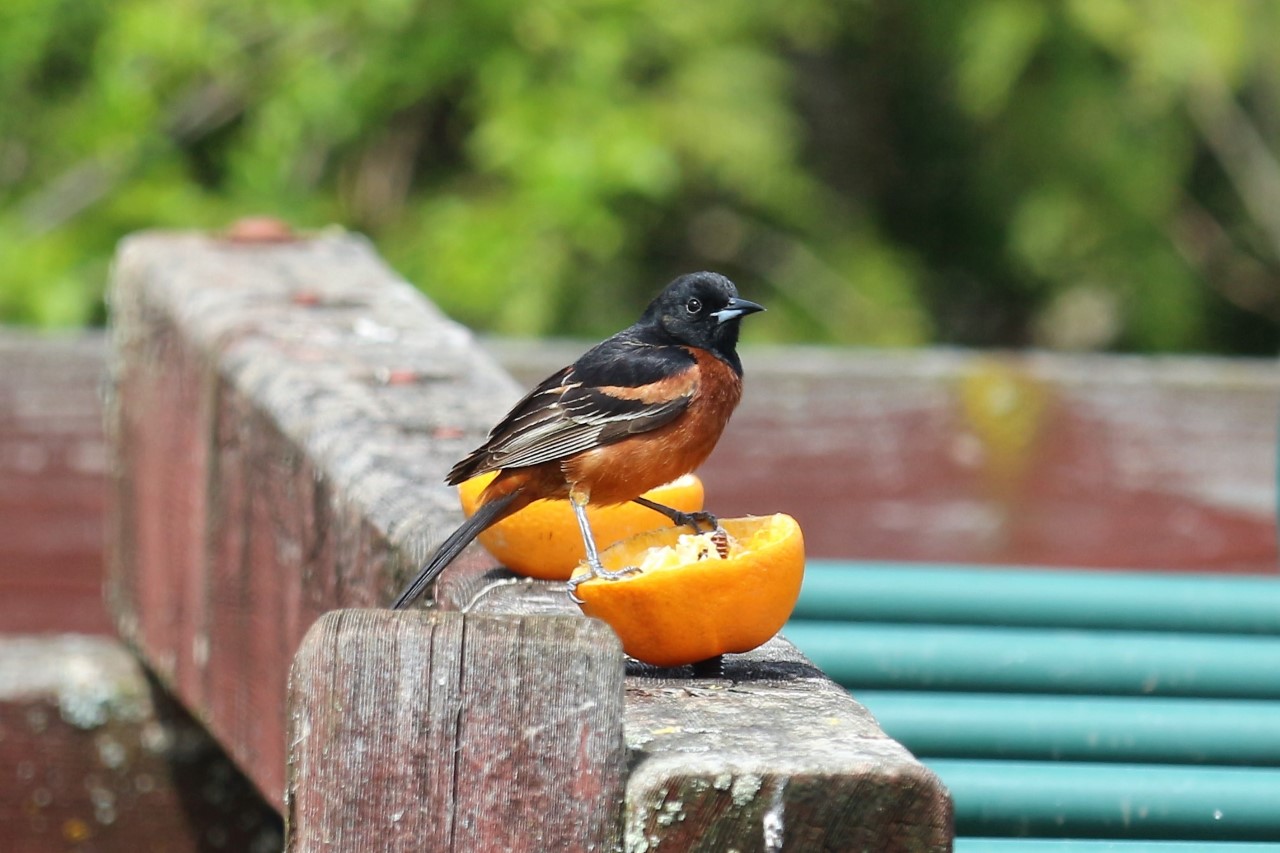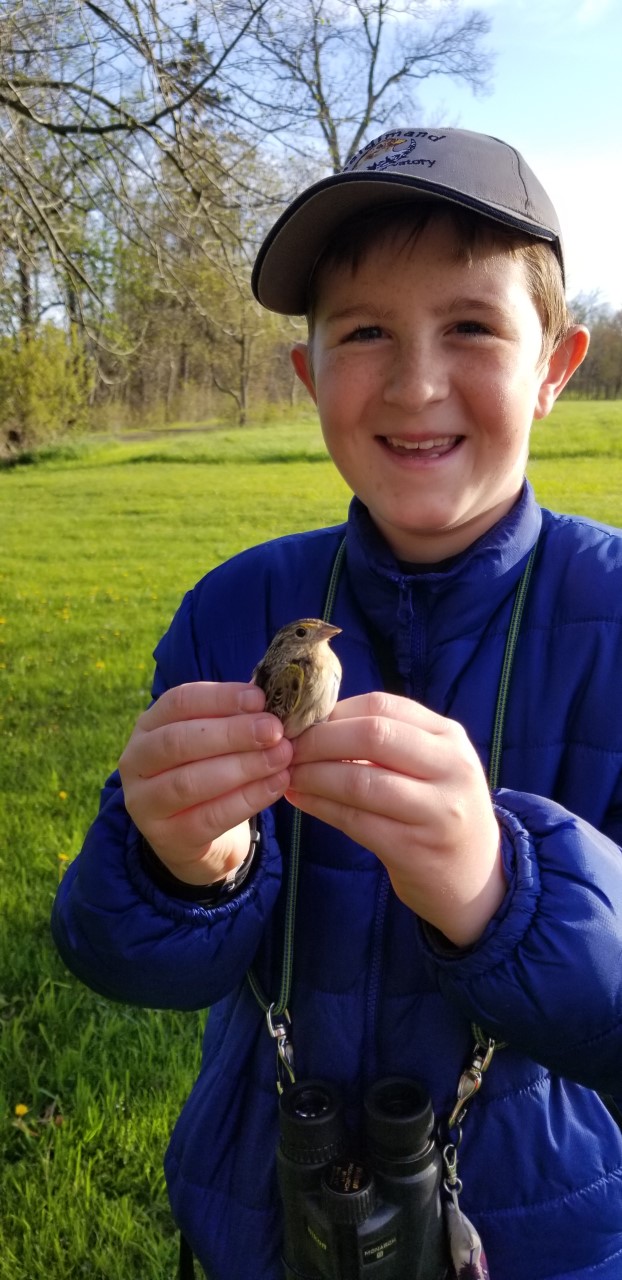It wasn’t nearly as frenetic as yesterday morning but there were still a LOT of great birds moving through the trees and understory. We saw 16 species of warblers and banded 13 of them. The warbler highlight was a male Golden-winged Warbler that Liam and Joshua turned up on the census – they had great looks at it. Back in the 80’s you would encounter this species back on the edges of the slough forests. Now they have been replaced by Blue-winged Warblers (which breed at Ruthven in good numbers) and Golden-wings are a rarity.
Another “neat” bird (and a banding first for the Park) was a Grasshopper Sparrow! I couldn’t believe it but….there it was.
After 40 dismal days of banding, the last 10 days have been….well, they’ve been great! Our birds banded per day average of 55 for April 11th – 20th is well above the average of 44.8 going back to 2011. I guess April showers do bring May showers…..eventually.
We are continuing to catch and band loads of Baltimore Orioles. The 11 we got today pushes our season total up to 84.
Banded 69:
1 Mourning Dove
1 Great Crested Flycatcher
4 Swainson’s Thrushes
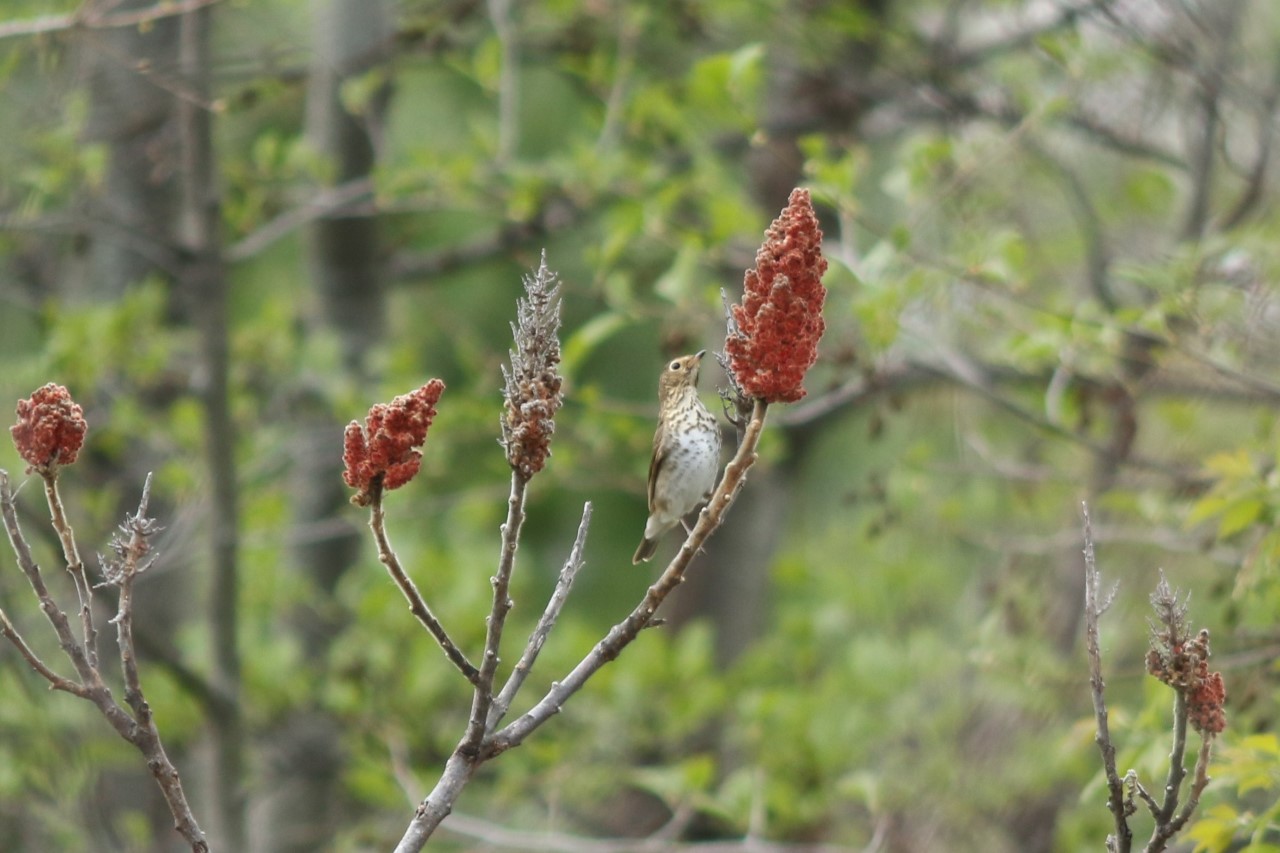
This Swainson’s Thrush is snacking on Sumac berries – sumac provides a good food source for thrushes in the Spring, especially during bad weather. -MMG
5 Gray Catbirds
1 Blue-winged Warbler
4 Tennessee Warblers
2 Nashville Warblers
3 Northern Parulas
6 Yellow Warblers
4 Chestnut-sided Warblers
5 Magnolia Warblers
3 Myrtle Warblers
2 Blackburnian Warblers
1 Bay-breasted Warbler
1 American Redstart
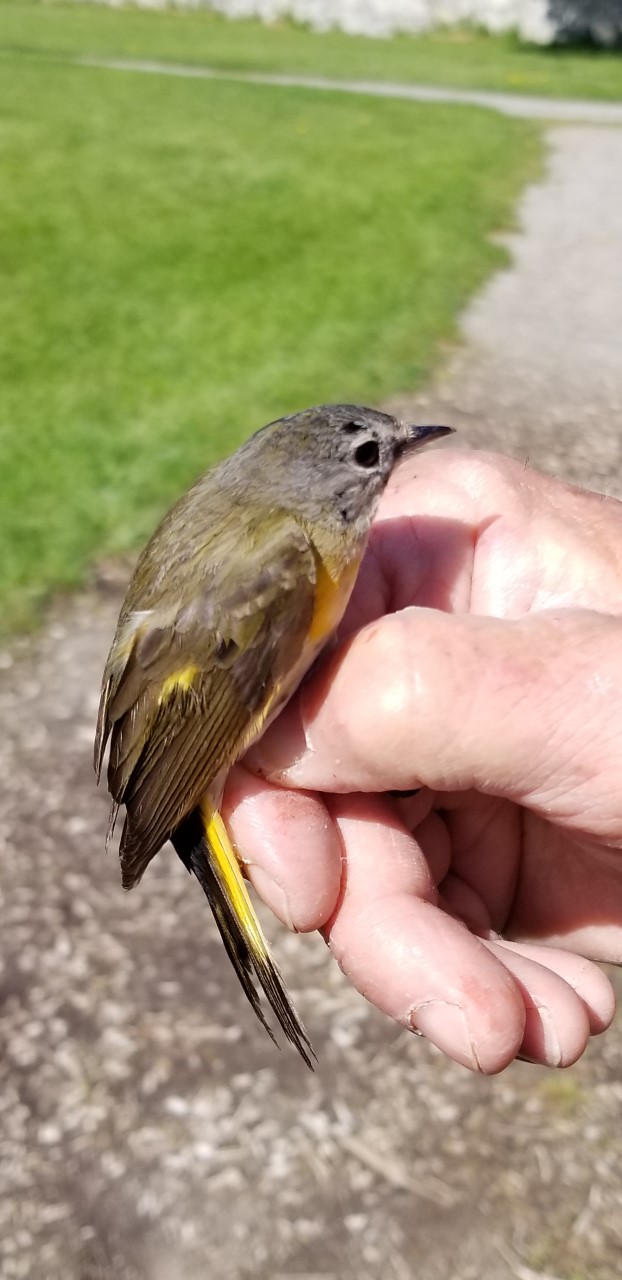
American Redstart. Note the black feather just above the eye. This indicates that this is a male; in their second year they look VERY much like females but begin to moult in the black feathers that will eventually result in that brilliant black and orange plumage that we associate with them. AT
3 Common Yellowthroats
1 Scarlet Tanager
1 Northern Cardinal
1 Rose-breasted Grosbeak
1 Indigo Bunting
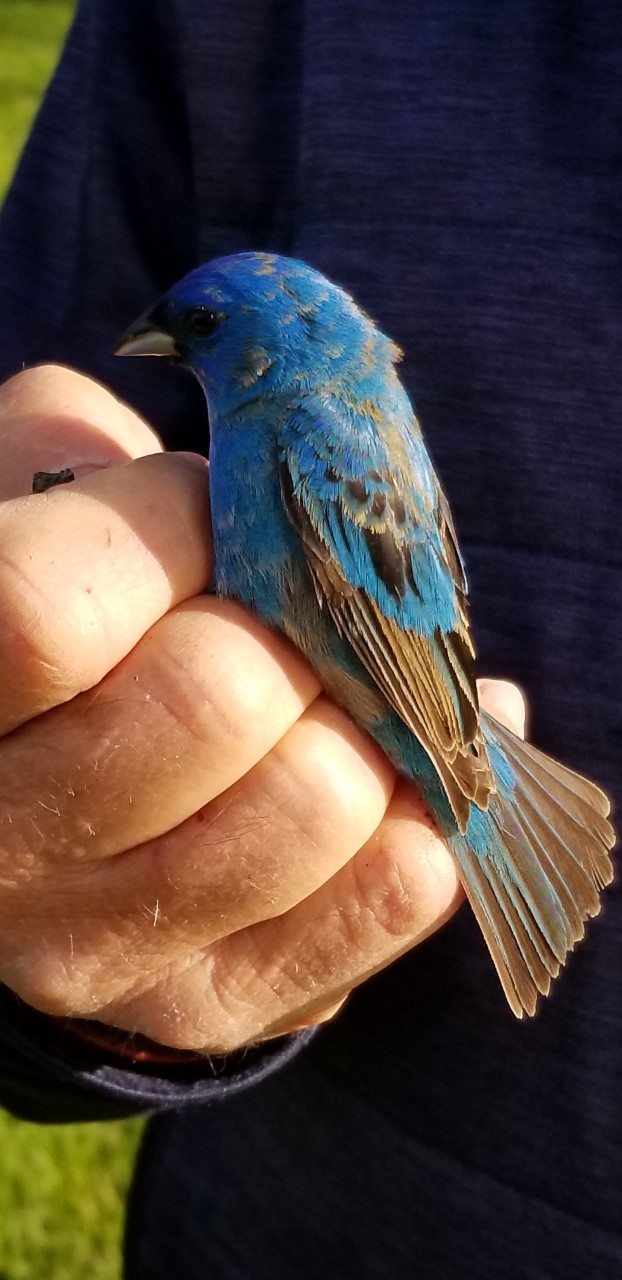
Male Indigo Bunting; the brown feathers in the wing tell you it’s a “young” bird – in its second year. -AT

Note the blue edging to the wing feathers of this male Indigo Bunting – an “older” or after second year bird. -KV
1 Grasshopper Sparrow
1 Eastern White-crowned Sparrow
1 Red-winged Blackbird
11 Baltimore Orioles
3 Orchard Orioles
ET’s: 68 spp.
Photos:
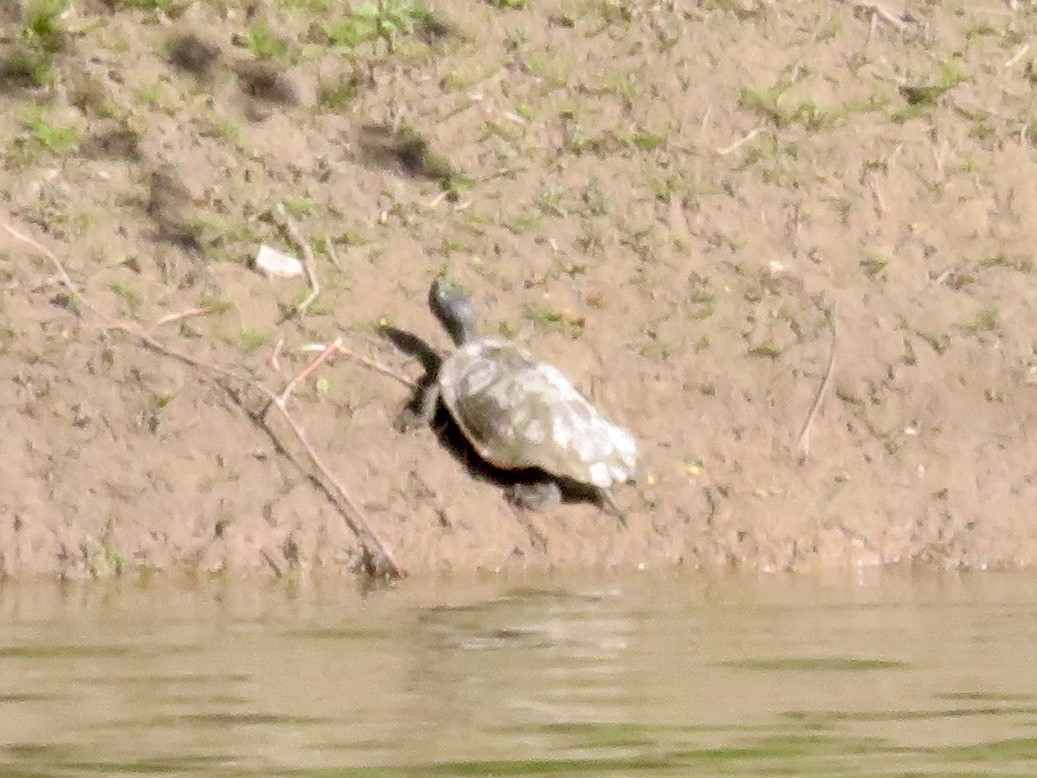
Karen found this adult female Map Turtle the other day moving up the bank to sun itself. Keep your eyes open! They’re becoming fairly rare. -KMP
Rick

